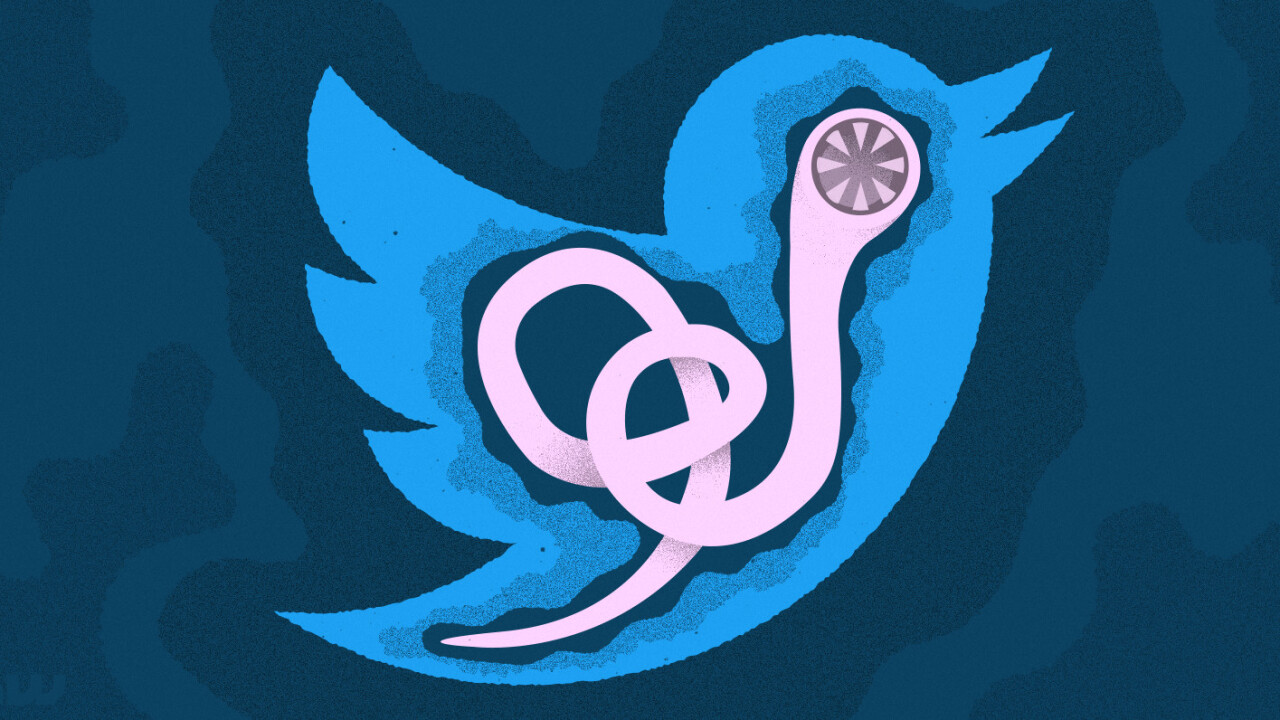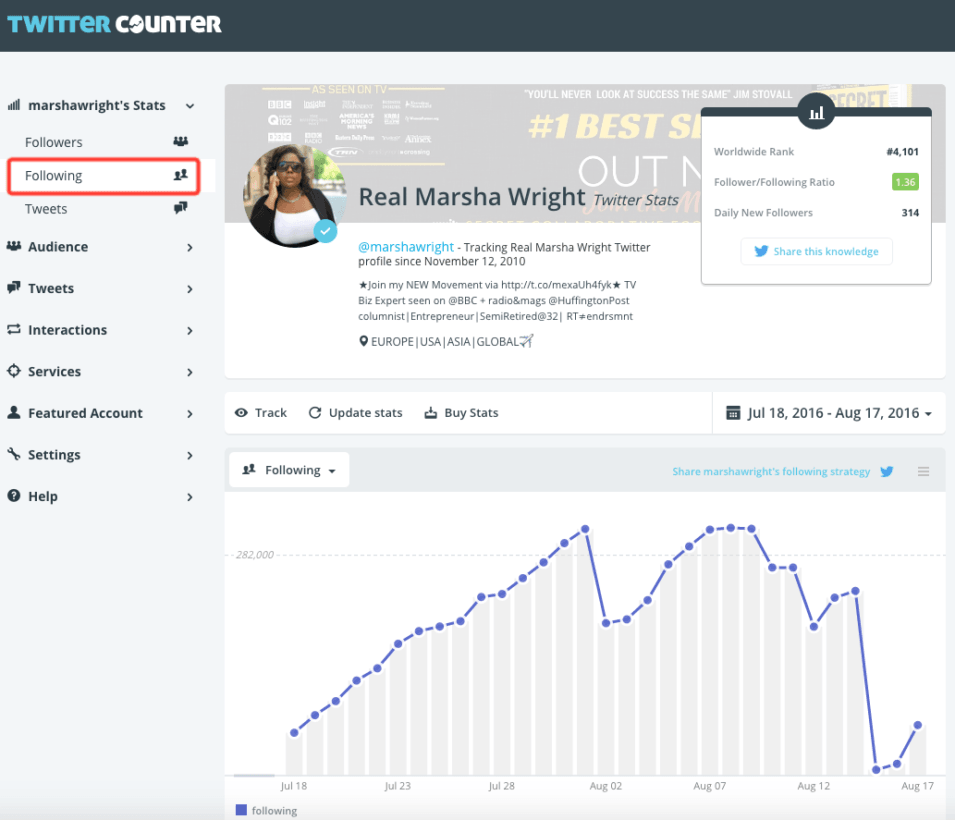
Twitter is probably my favorite social network, and has been for sometime. I love the ability to search for and find fascinating people across the globe who I may not otherwise have access to.
I can instantly send a message (tweet) to high profile business execs, politicians, celebrities, brands, campaigners and of course, friends. The speed at which it brings breaking news from around the world is incredible. Twitter’s simplicity and core features are both its key to success, as well as its achilles heel.
Twitter parasites
As much as I love Twitter, there is one thing I really can’t stand on the platform, and for some reason it irritates the hell out of me…
…One thing that shouldn’t frustrate and annoy me as much as it does.
…One thing that I know experienced (and decent) Twitter users will understand my loathing of…
…The Spammy Follow / Unfollow Twitter Account Parasite!
The Twitter parasite explained
There is a sub-set of Twitter users who, in an effort to gain a large number of new followers at speed, use a lame strategy which involves a really simple gaming of a core Twitter function. The follow/unfollow button.
The trick is they follow hundreds, thousands, sometimes tens of thousands of Twitter users, in bulk – every day – making use of a range of tacky bots or automation tools found online, or via various scripts that tinker with the Twitter API, to mass-follow/unfollow other accounts.
Once they have followed all these users, they typically wait a few days or weeks, before unfollowing a similar volume (tens of thousands) of Twitter users, to make sure their account appears less bogus or spammy (more followers than accounts being followed).
The purpose here being to gain a follow back from the person they have followed. If they follow 50,000 accounts in one day, and only one percent follow them back, that’s still 500 new followers generated for their account with little, or no effort. Repeat this daily for months or even years, and you can see how they can quickly create an account with millions of followers.
Once they have a fairly sizeable Twitter account, the conversion of accounts followed by them, into new followers of their own account, gets even easier.
Think about it – if you were unaware of this practice and got notified of a new Twitter follower who had 2,000,000+ followers, you might be forgiven for assuming they are important or popular. There are also verified accounts that that also use this dodgy scheme. So you can see why this crap-tastic tactic is often a very successful Twitter account growth hack.
These parasites often set their automated mass follow/unfollow bots on new or less experienced Twitter users, as well as newly verified accounts – hoping to gain lots of new followers who are verified. Adding credibility to their own account only feeds their taste for spammy Twitter behavior.
Spot the Twitter parasite
It’s not hard to spot these Twitter parasites. If you stumble upon a new follower who has a big following, yet the number of accounts they follow themselves is similar to the amount of accounts following them… you may be looking at a Twitter spammer who mass follows/unfollows accounts.
e.g. 

Amusingly, these Twitter parasites often proclaim that they are “Social Media Strategists”, or “Digital Experts”, or my favorite “Featured in Forbes 50 Most Influential People Online”.
What’s the big deal?
Ultimately, this tactic is fairly pointless in the long-run if you plan on using Twitter in any useful and meaningful way.
Once they’ve amassed a following via this method, the level of engagement on their account is typically very low. They also run the risk of being found out and left looking like a spammy asshole who cheats and ignores Twitter’s Terms of Service.
As for the people these parasites constantly pester with their follow/unfollow antics, well, they find it bloody annoying!
For new Twitter users, it makes it harder to find genuine, useful, and interesting accounts worth following due to the artificially inflated follower numbers these users create.
Let’s be clear…
I’m not for one minute suggesting this is Twitter’s biggest issue, nor that it even comes close to the upset and distress caused by other bigger challenges the platform faces (think harassment and abusive tweets). However, on a day-to-day level, this issue pops up constantly and IS a major frustration for many.
At a wider level, the entire Twitter community is being duped and played and only adds fuel to the fire that Twitter is a spammy and fraudulent mess what with this, bots, and other fake accounts increasing all the time.
So the question is, what’s the best way to deal with Twitter user’s you suspect are playing this shitty game? Get evidence!
- Step 1: Head over to TwitterCounter and run a quick search to find the suspect Twitter user.

- Step 2: Click the “Following” tab in the left-hand column. This will show you the volume of accounts they have followed/unfollowed each day during a set timeframe.

- Step 3: If the numbers are accounts being followed/unfollowed daily is insanely high (lots of peaks and valleys on the chart)… Congratulations! You found a Twitter Parasite!


How I deal with Twitter parasites
When I stumble upon one, my preferred method of tackling the issue is by publicly, but politely, asking them via a Tweet why they follow-unfollow thousands of Twitter accounts every day.
Here are a few examples of such tweets:
.@marshawright Why do you follow 1000+ RANDOM Twitter accts EVERY day, then regularly unfollow 1000s in bulk? pic.twitter.com/GcFfGIxFDL
— Matt Navarra (@MattNavarra) August 5, 2016
.@benlandis Why do you follow/unfollow up to 23,000 Twitter accounts per day? pic.twitter.com/Pa644HLZ9K
— Matt Navarra (@MattNavarra) August 16, 2016
Don’t be surprised if you don’t get a response, I mean, what are they going to be able to say that justifies or explains their account activity? I tend to repost my tweet a few times, before accepting they are too cowardly to respond. I then pass judgement that they are indeed a Twitter Parasite.
What’s Twitter doing about it?
You may wonder why Twitter HQ lets this type of account behavior go on? In short, I don’t have the answer for that.
In all fairness, Twitter does have measures in place to deal with what it calls ‘aggressive following’ or ‘churn’. It places limits on the numbers of accounts a user can follow/unfollow every hour, before it restricts or blocks the account from following or unfollowing more users. This measure also applies to third party tools using the Twitter API that some spammers use to automate their activity.
You may not use or develop any application that allows for the following or unfollowing of user accounts in a bulk or automated manner. Using block as a means to unfollow users is also not allowed. Accounts and applications that engage in this practice will be suspended. Please also review our Following rules and best practices to ensure you are in compliance. Also note that applications that claim to get users more followers are prohibited under the Twitter Rules.
However, my frustration and reason for writing this post is that these measures are clearly inadequate and ineffective.
This issue has existed for as long as i can remember, and the frequency i’m seeing it happen appears to be rising. It’s even more frustrating that many fairly well-known users and some verified Twitter accounts are playing this spammy game too. WTF, Twitter?!
Twitter does let you report users for what it deems as spam via its desktop site and mobile apps, but the wording of the ‘report for posting spam’ option does not seem to fit the specific issue raised here.


The report spam option is more aimed at dealing with users tweeting spammy content, or accounts that are fake or junk automated marketing accounts. The issue here is different. This is about genuine users using a tactic to rapidly grow their following, at the detriment of the platform and other users.
However, there may be some confusion, as Twitter’s definition of spam states:
You may not use the Twitter service for the purpose of spamming anyone.
What constitutes “spamming” will evolve as we respond to new tricks and tactics by spammers.
Some of the factors that we take into account when determining what conduct is considered to be spamming are:
– if you have followed and/or unfollowed large amounts of accounts in a short time period, particularly by automated means (aggressive following or follower churn);
– if you repeatedly follow and unfollow people, whether to build followers or to garner more attention for your profile
Either way, the signposting of reporting the issues is, at best, ambiguous.
Also, the sheer volume of accounts indulging in this practice shows to me that Twitter has either given up, or its solution to the problem is not working or is overwhelmed. So, like Twitter’s challenges with harassment and abusive tweets, the sheer scale of the issue appears beyond Twitter’s capability to tackle.
Regardless, Twitter’s core loyal and genuine users need it to step up. Put a stop to one of the most long-running and irritating spammy Twitter practices out there once and for all.
What now?
I guess I’ll just have to resort to manually squishing (blocking) these parasites daily, but only once I have named and shamed them on the platform.
PS. If you know of any big, popular, verified accounts doing this, send me a Twitter DM or @ mention them to me in a tweet… I’d love to chat to them about it ;)
PPS. And if you read this and had a deep sense of shame, regret, or nervousness – do the right thing. Pay the price for your Twitter sin by clicking the link below to send this one simple tweet:
Tweet: Dear @TheNextWeb. I confess! I’m a #TwitterSinner: http://ctt.ec/i2578+
Get the TNW newsletter
Get the most important tech news in your inbox each week.





